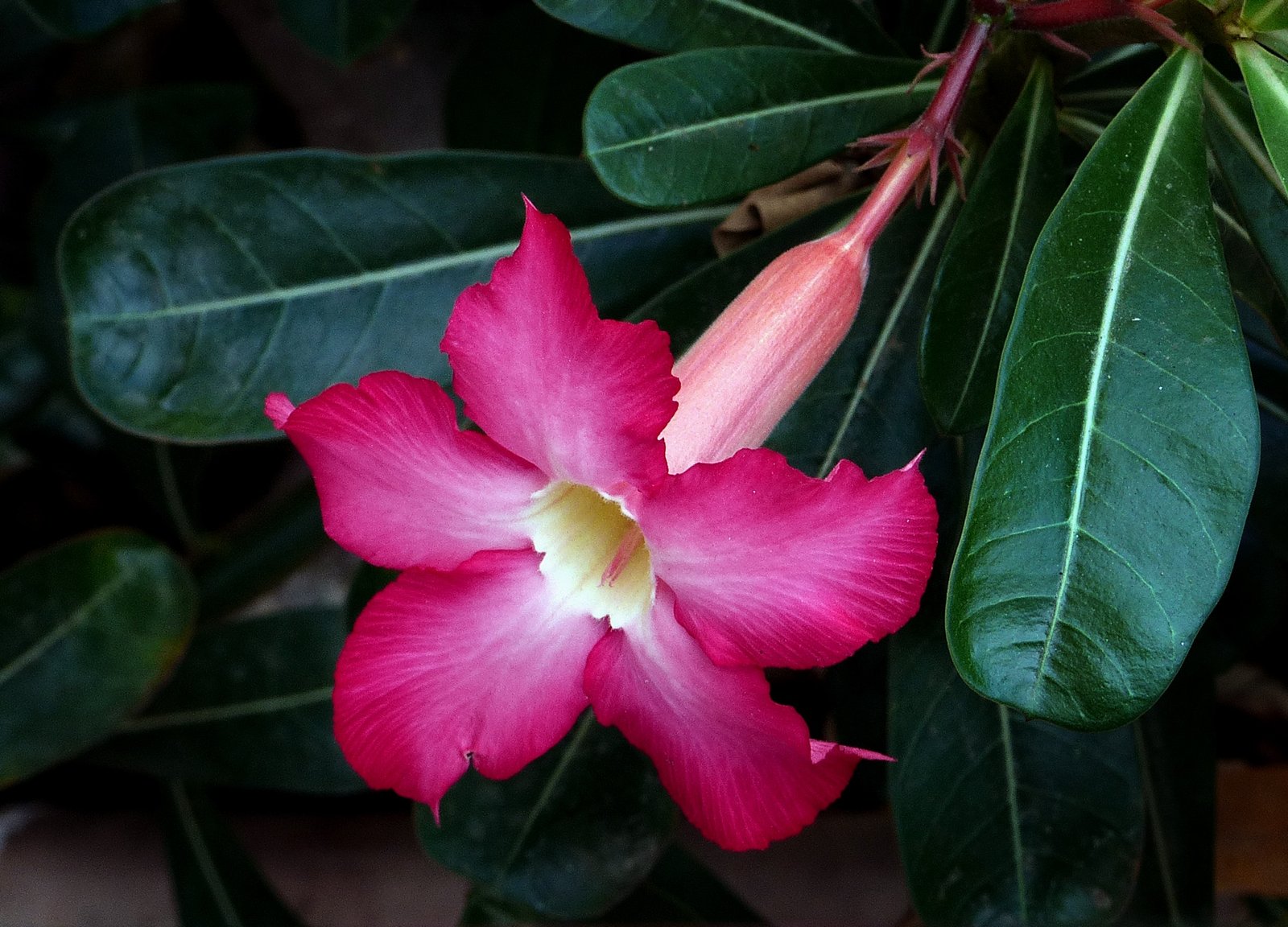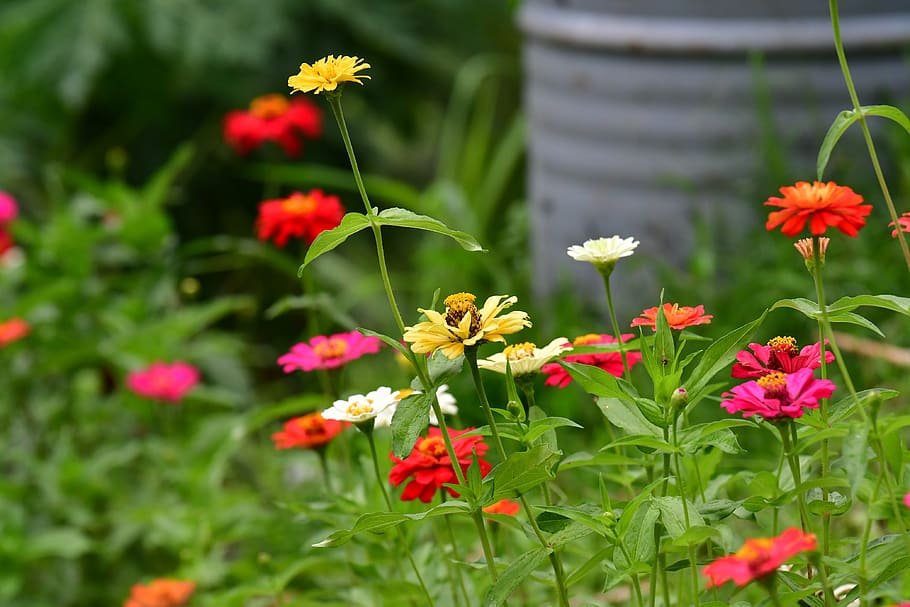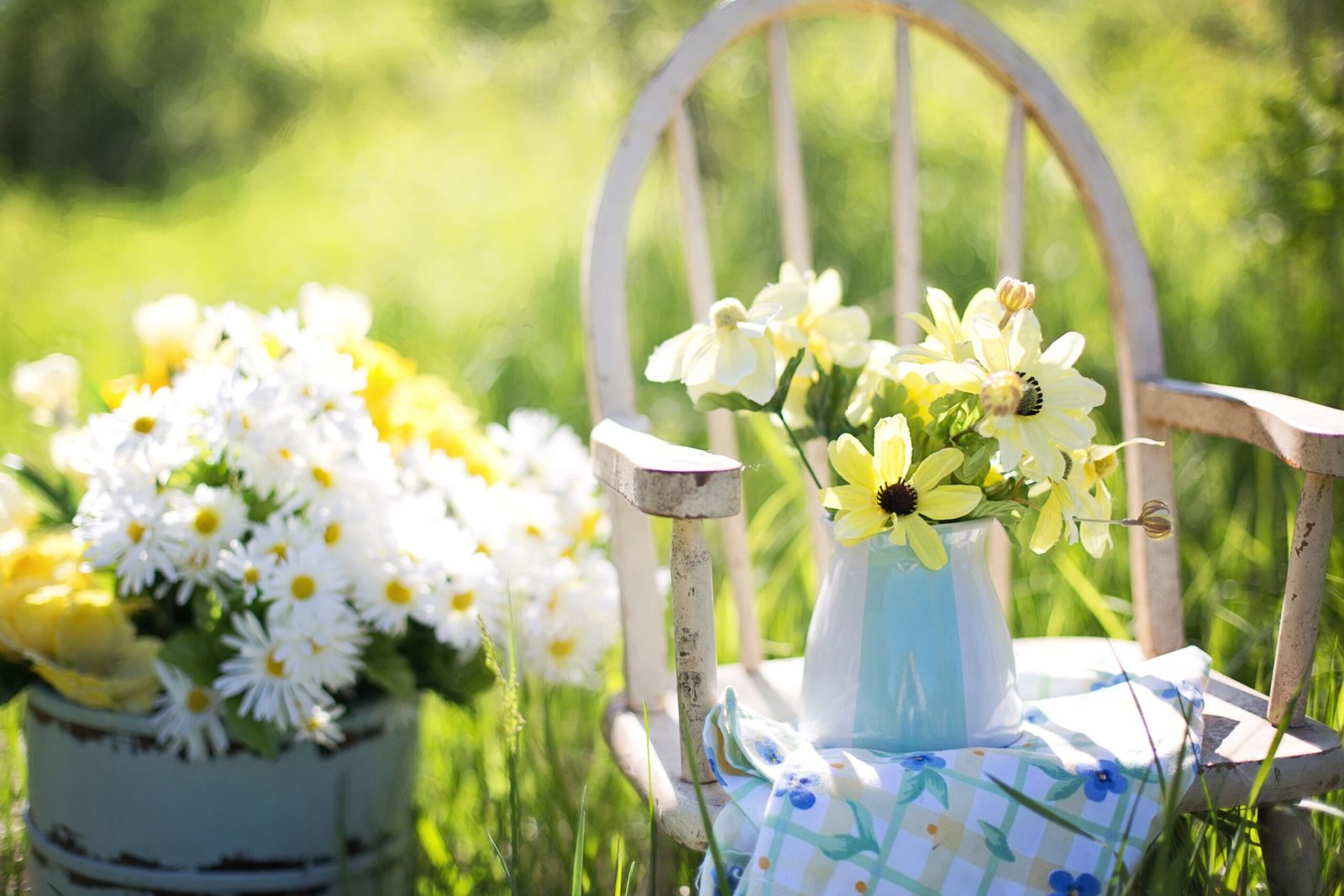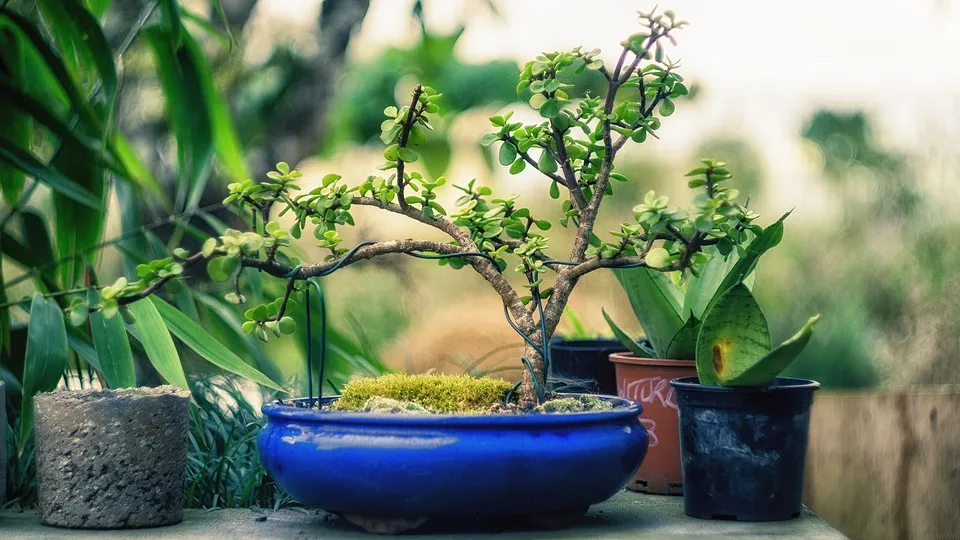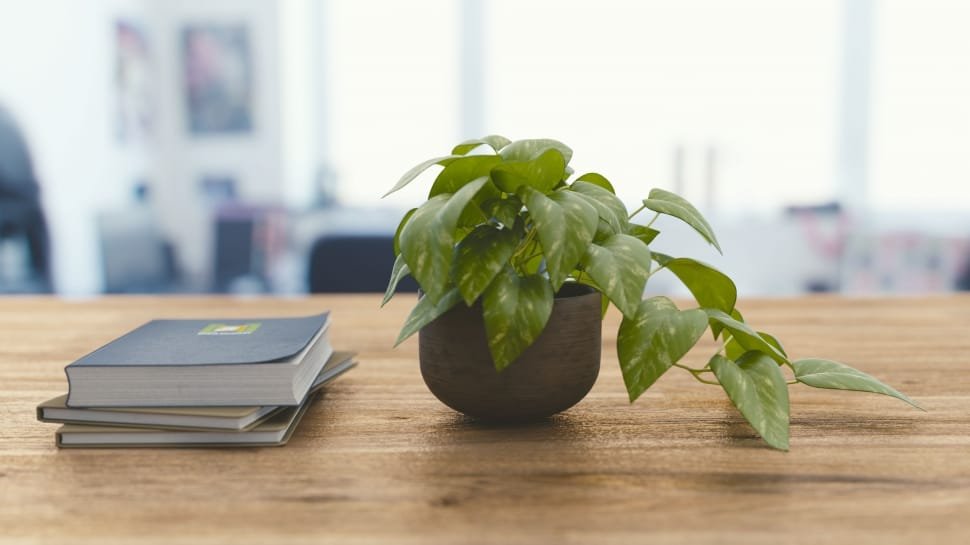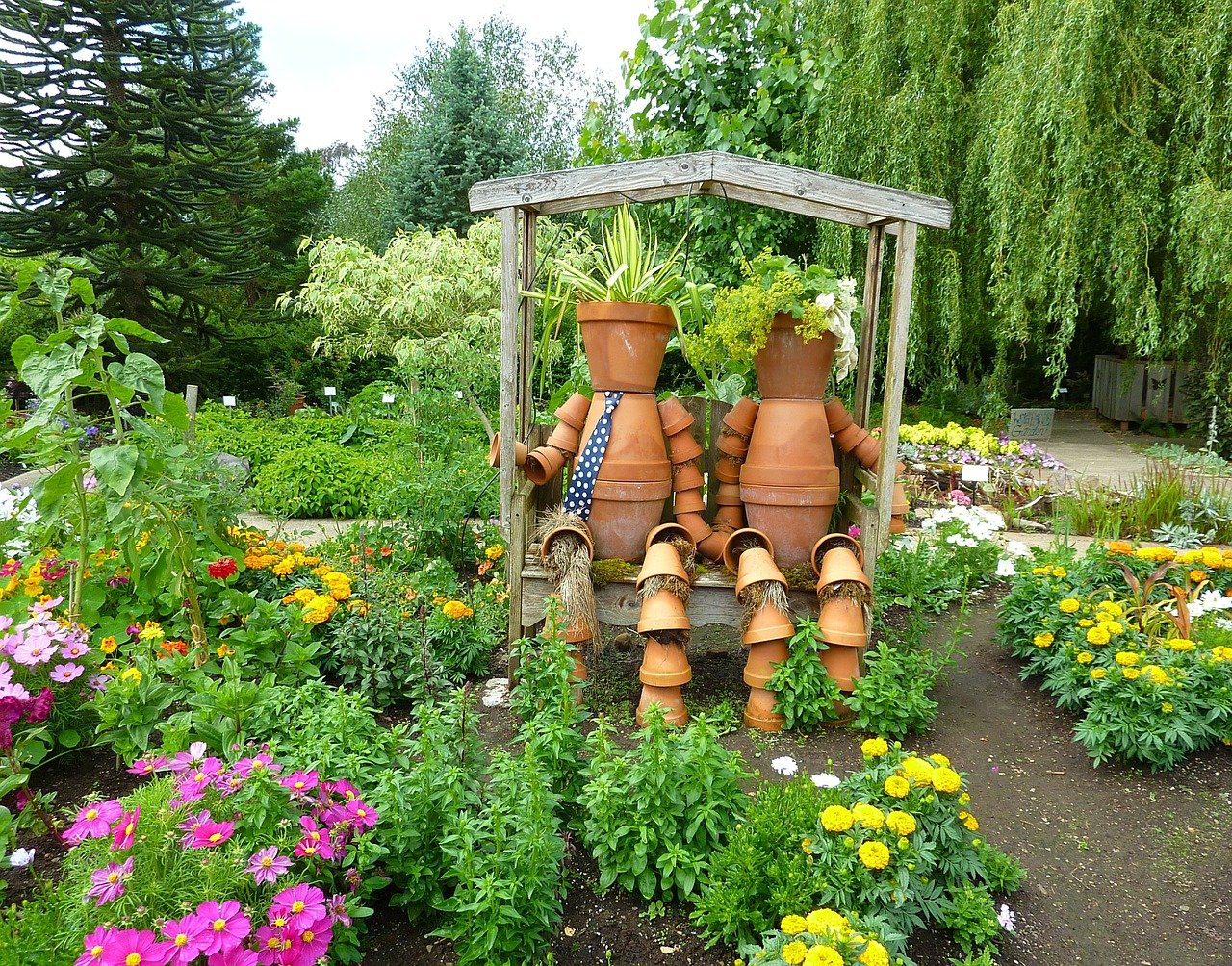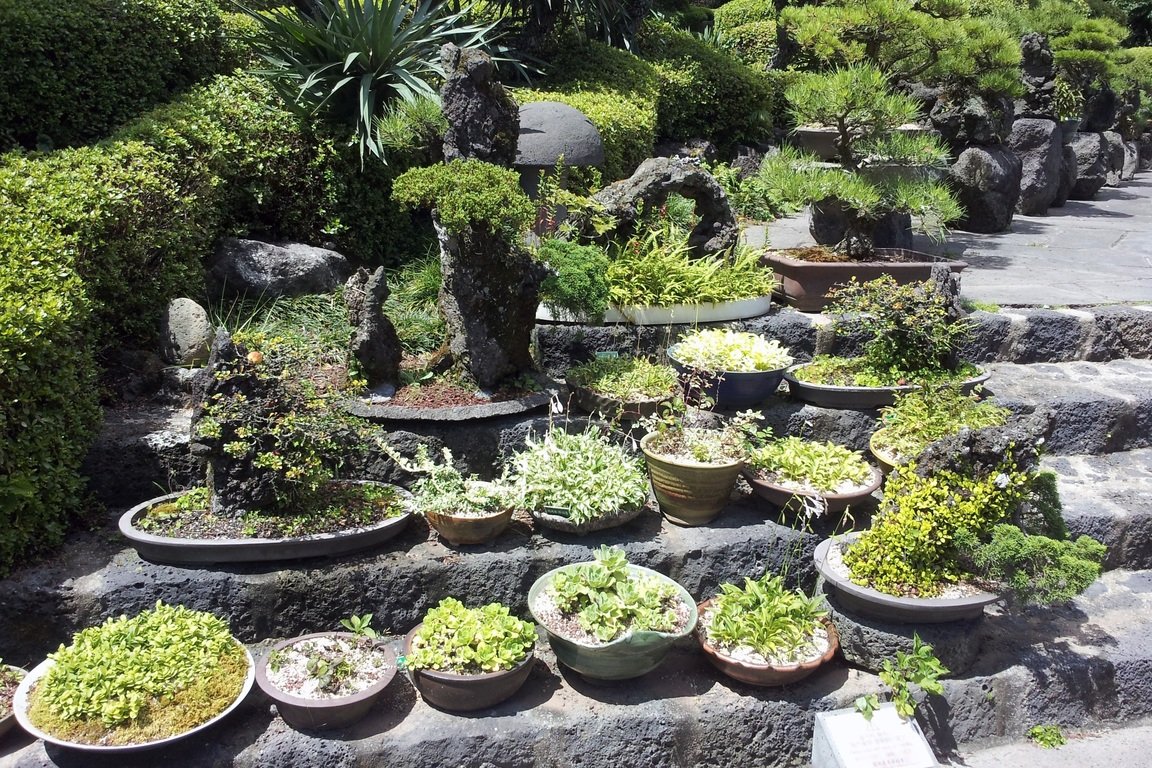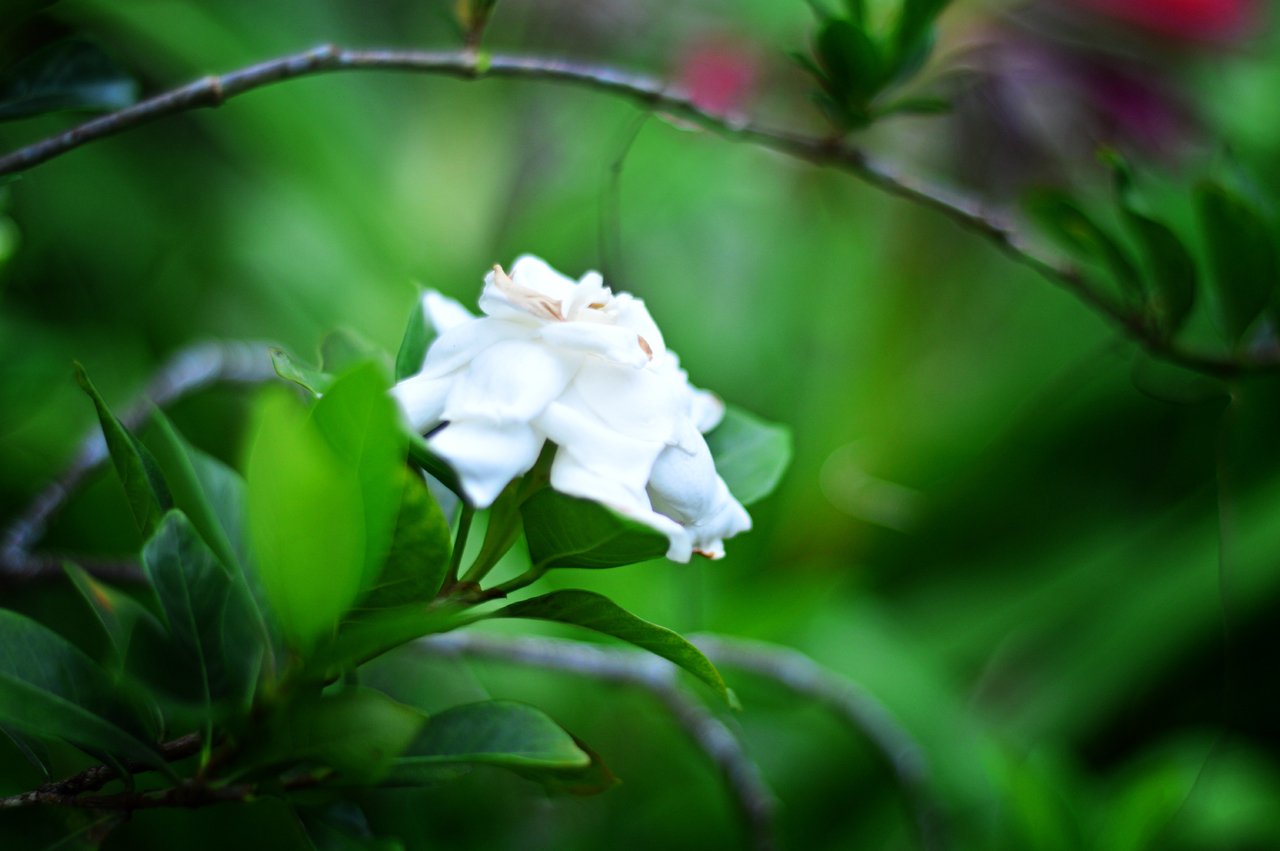Bonsai, deeply rooted in Japanese culture for centuries, transcends mere artistry; it embodies a Zen-like source of tranquility and mindfulness. These miniature trees, meticulously sculpted and pruned, bring forth a deep understanding of harmony and nature into our homes. However, the path to selecting the ideal indoor bonsai is not without its complexities. From considering light requirements to choosing suitable tree species and embracing care tips, this guide will empower you to make an informed choice for nurturing a thriving indoor bonsai that resonates with the Zen spirit.
Table of Contents
What type of bonsai is best for indoors?
Selecting a suitable indoor bonsai is a crucial decision to ensure its health and vitality. Here are some key factors to consider:
- Light Levels
Indoor bonsai thrive in bright, indirect sunlight. Consider the available natural light in your home when choosing a bonsai species. Some varieties are more tolerant of lower light conditions than others.
- Temperature
Most indoor bonsai prefer a consistent, moderate temperature range. Avoid placing your bonsai in drafty or extreme temperature zones to prevent stress on the plant.
- Humidity
Bonsai trees typically need higher humidity levels than what’s found in most indoor environments. You may need to provide additional humidity through methods like misting or using a humidity tray.
- Species Suitability
Some bonsai species are better suited for indoor cultivation than others. Ficus, Jade, and Chinese Elm are popular choices for indoor bonsai due to their adaptability to indoor conditions.
- Pot Size and Style
The choice of pot and its size also plays a role. Ensure the pot allows for proper drainage, as waterlogged roots can harm your bonsai.
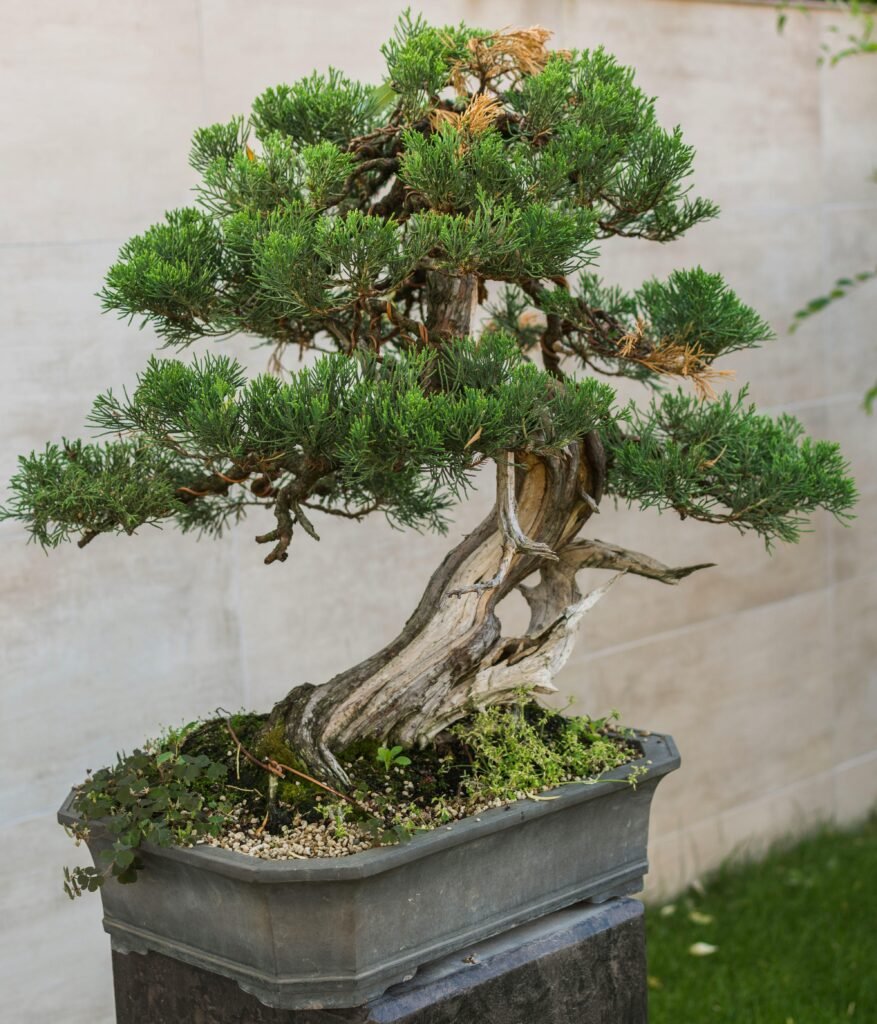
What are the benefits of having an indoor bonsai?
Indoor bonsai trees offer a multitude of benefits beyond their aesthetic appeal. They provide an opportunity for mindfulness and relaxation as you tend to their delicate needs. The act of nurturing and caring for these miniature marvels can have a profoundly calming effect on the mind and emotions. Engaging with your indoor bonsai promotes mindfulness, reduces stress, and enhances overall well-being. It encourages a sense of connection to nature, even within the confines of indoor spaces, fostering a serene environment that soothes the soul and rejuvenates the spirit.
In this blog, we’ll dive deep into the world of indoor bonsai, answering these questions and more. You’ll learn about the best bonsai species for your living space, discover essential care techniques, and uncover the hidden benefits of nurturing these captivating miniatures. Join us on a journey to bring serenity indoors through the art of bonsai.
The Serenity of Indoor Bonsai
The Art and Philosophy of Bonsai
Here, the blog explores the artistic and philosophical aspects of bonsai. It delves into the history and significance of this ancient Japanese art form, which involves meticulously cultivating and shaping miniature trees to mimic the beauty of nature. Bonsai is not merely a horticultural practice; it’s a profound art that represents harmony, patience, and a deep connection to the natural world.
Why Choose an Indoor Bonsai?
This part discusses the reasons for selecting an indoor bonsai for your living space. Indoor bonsai trees offer a unique opportunity to bring a touch of nature and tranquility into your home or office. They are not just decorative elements but also sources of mindfulness and relaxation. This section explores the therapeutic benefits of nurturing indoor bonsai and why it’s a choice that goes beyond aesthetics, offering a serene and soothing atmosphere to your indoor environment.
Selecting the Ideal Indoor Bonsai
Selecting the ideal indoor bonsai involves a thoughtful consideration of several key factors to ensure the tree thrives in your indoor environment. This process can be broken down into the following components:
Light Requirements for Indoor Bonsai
Different bonsai species have varying light requirements. Some may thrive in bright, indirect sunlight, while others prefer more shade. Understanding the specific light needs of your chosen bonsai species is crucial to placing it in the right location within your home.
Temperature and Humidity Considerations
Indoor bonsai trees have temperature and humidity preferences that need to be met for their well-being. Maintaining a stable indoor temperature, avoiding extreme fluctuations, and ensuring the right humidity levels, often through misting or humidity trays, are essential for their health.
Popular Indoor Bonsai Species
There is a diverse range of bonsai species suitable for indoor cultivation. Familiarizing yourself with these popular choices, such as Ficus, Jade, or Chinese Elm, can help you make an informed decision based on your indoor environment and personal preferences.
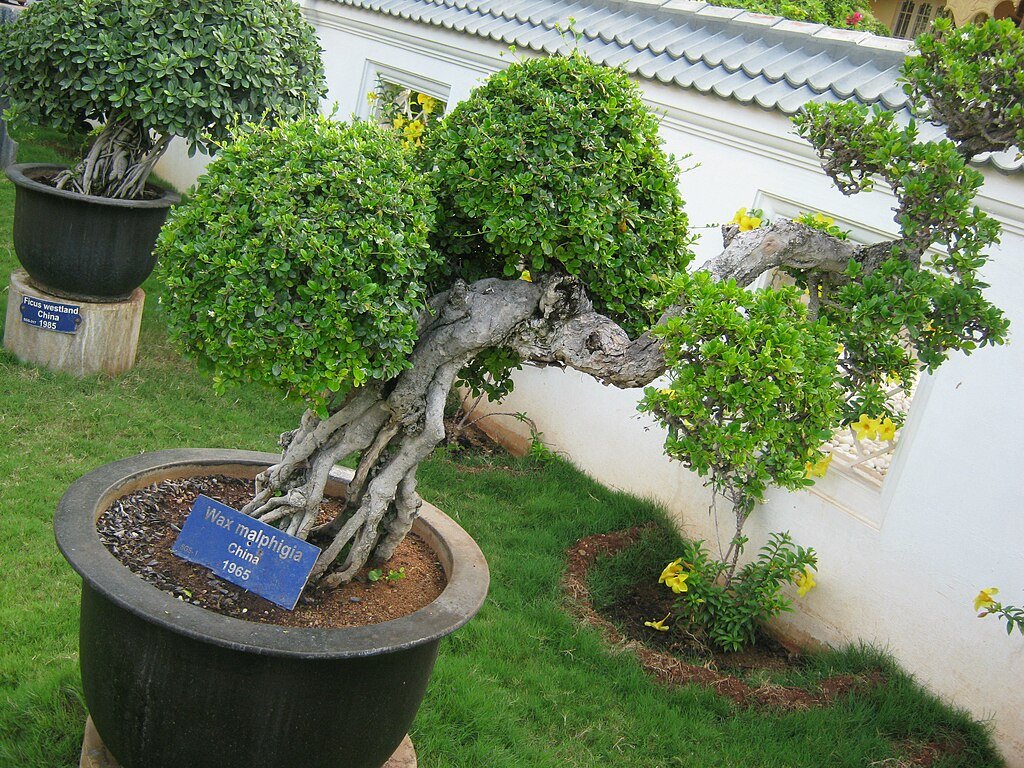
Caring for Your Indoor Bonsai
Watering: The Lifeline of Your Bonsai
Watering is perhaps the most crucial aspect of bonsai care. It’s the lifeline that sustains your bonsai’s health. The key here is to strike a balance—ensure the soil doesn’t stay consistently wet or dry. Allow the topsoil to slightly dry between watering sessions to prevent root rot, a common issue in overwatered bonsai.
The Artistic Touch: Pruning and Shaping
Pruning and shaping are where the artistry of bonsai truly shines. Regular pruning is essential to maintain the bonsai’s form, encourage new growth, and remove excess branches or foliage. Shaping involves carefully training the limbs and trunk to achieve the desired aesthetic. This is an intricate process and should be done gradually and thoughtfully.
Repotting: Nourishing Growth
Repotting is a critical part of bonsai care and involves transplanting the tree into a new pot with fresh soil. It provides the bonsai with essential nutrients, encourages healthy root development, and prevents it from becoming root-bound. Repotting should be done every few years, with the frequency depending on the age and growth rate of your bonsai.
Protecting Against Pests and Diseases
Regular checks for pests and diseases are essential to keep your bonsai healthy. Common issues include aphids, scale insects, and spider mites. Address any infestations promptly with appropriate treatments to protect your bonsai from harm.
Bonsai Styles for Indoors
There are various design approaches or aesthetic forms that you can apply to your indoor bonsai tree to create a particular visual and artistic effect. Each style has its unique characteristics and appeals.
Here’s an explanation of the mentioned bonsai styles:
The Timeless Elegance of Formal Upright
This style embodies a traditional, upright posture where the tree’s trunk grows vertically with symmetric branches radiating out in a balanced, orderly manner. It conveys a sense of stability, strength, and grace.
The Graceful Cascade Style
In this style, the bonsai’s trunk cascades downward, resembling a tree growing on the edge of a cliff or near waterfalls. The branches and foliage flow gracefully downward, evoking a sense of movement and tranquility.
The Windswept Beauty of Literati
Literati bonsai are characterized by their unconventional, twisted, and contorted trunks and branches. This style often conveys the image of a tree enduring harsh winds and challenging conditions, symbolizing resilience and endurance.
The Balanced Forest Planting
Also known as the ‘group planting’ style, this approach involves planting multiple bonsai trees together in a single container to mimic a miniature forest landscape. The various trees are arranged to create a harmonious and balanced composition, emulating the serenity of a natural forest.
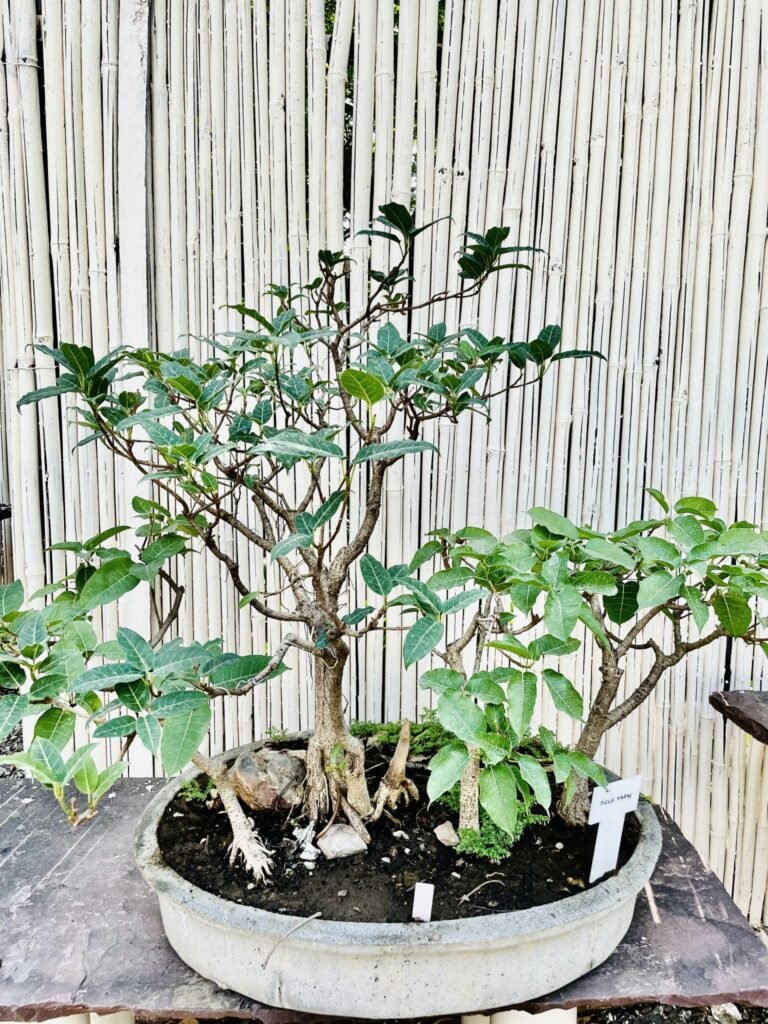
Creating a Serene Bonsai Space Indoors
Pot and Soil Selection
Choose an appropriate pot that allows for proper drainage and root health. Select the right soil mixture to provide essential nutrients and support growth.
Aesthetic Display
Consider the aesthetics when deciding where to place your bonsai. Ensure it receives adequate, indirect sunlight and complements the overall decor of your living space.
Bonsai Accessories
Enhance the visual appeal of your bonsai space with bonsai accessories, such as miniature figurines or decorative stones. These additions can contribute to the overall tranquility and charm of your indoor bonsai area.
Benefits of Indoor Bonsai Beyond Beauty
Stress Reduction and Mindfulness
Tending to indoor bonsai trees promotes stress reduction and mindfulness. Caring for these miniature trees requires focused attention, creating a meditative experience that alleviates stress and fosters mental well-being.
Improved Air Quality
Indoor bonsai trees enhance air quality by absorbing carbon dioxide and releasing oxygen. They also help remove pollutants, contributing to a healthier indoor environment and improving overall health.
Nurturing Your Connection to Nature
Indoor bonsai trees provide a vital connection to nature, fostering an appreciation for the natural world and its cycles. This connection enhances your sense of harmony and balance in today’s fast-paced, digital world.
Common Mistakes to Avoid with Indoor Bonsai
Overwatering or Underwatering
One of the most common mistakes is not getting the watering balance right. Overwatering can suffocate the roots, leading to root rot, while underwatering can cause the tree to dry out and die. It’s essential to monitor the soil’s moisture level and water when the top inch or so feels slightly dry. Proper drainage is crucial to prevent waterlogging.
Neglecting Pruning and Training
Neglecting the regular pruning and training of your indoor bonsai can result in an unruly, unattractive appearance. Pruning is essential to maintain the bonsai’s shape, remove excessive growth, and encourage healthy branching. Training techniques like wiring and shaping are vital for achieving the desired aesthetic form.
Ignoring Environmental Needs
Bonsai trees have specific environmental requirements, including light, temperature, and humidity. Ignoring these needs can lead to the decline of your bonsai. Providing the right amount of indirect sunlight, maintaining a stable indoor temperature suitable for the species, and addressing humidity needs through misting or humidity trays are crucial for a thriving indoor bonsai.
The Bonsai Journey: Patience and Growth
Caring for a bonsai tree is not just about maintenance; it’s a profound journey of patience and growth, both for the tree and the caretaker. This section delves into the spiritual and philosophical aspects of bonsai care:
The Zen of Bonsai Care
Bonsai cultivation is often associated with Zen philosophy, emphasizing mindfulness, simplicity, and the present moment. It encourages practitioners to connect deeply with their bonsai trees, fostering a sense of inner peace and tranquility. The act of tending to a bonsai becomes a meditative practice, aligning with the Zen principles of harmony with nature.
Celebrating Milestones in Your Bonsai’s Life
Bonsai enthusiasts celebrate significant moments in their bonsai’s growth journey. These milestones might include the successful shaping of a branch, the flourishing of new foliage, or the tree’s first blooming. These celebrations serve as reminders of the patience and dedication required in bonsai care and bring a profound sense of accomplishment to both beginners and seasoned practitioners. It’s a way of acknowledging the bond between the caretaker and the tree and deepening the connection to this ancient art form.
Embracing the world of indoor bonsai is not just a decorative choice; it’s an invitation to cultivate serenity, patience, and a profound connection to nature within the confines of your home. By selecting the right indoor bonsai, understanding its unique care requirements, and appreciating the holistic benefits it offers, you embark on a journey of artistry, mindfulness, and personal growth.
With each delicate pruning and every tender moment of care, your indoor bonsai becomes a living testament to the beauty of patience and the enduring harmony between humans and the natural world. Welcome the tranquility of bonsai into your life, and watch as it transforms your living space and your soul.

